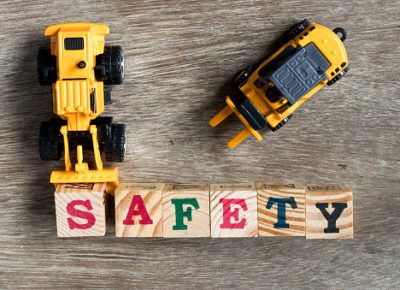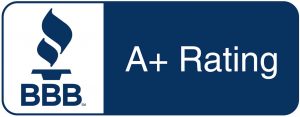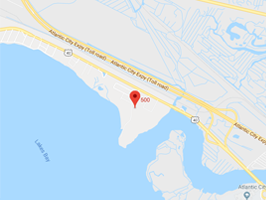Author Archives: vlm
8 Tips to Throwing a Holiday Party
 It’s a festive time of year. Before throwing a holiday party, take a moment to think about your responsibility as the party host.
It’s a festive time of year. Before throwing a holiday party, take a moment to think about your responsibility as the party host.
Here are 8 tips for throwing a holiday party that is safe and responsible:
1. Do your homework. If you are having a holiday event that is large, you need to read over your homeowner’s insurance policy. Review your liability coverage limits to ensure that you are adequately covered in case of an accident. 2. Watch what you eat and feed others. Whether you decide to cook the food yourself, have a five star caterer, or pizza, make sure that the food you put out is safe. If anything is undercooked, spoiled or contaminated, you could have a problem on your hands if your guest needs to seek medical attention for food poisoning. When in doubt, you should throw it out. 3. Know your state laws and statutes. In many states, a party host can be held liable if a guest is involved in an alcohol-related accident. If a party guest gets in an alcohol related accident after leaving your party, you could be held responsible for payment of medical bills, costs of vehicle repairs, and possibly claims for a wrongful death. 4. Don’t center your party around alcohol. In order to minimize the alcohol your guests drink, schedule entertainment or activities that don’t involve alcohol. Furthermore, make sure there is lots of food and non-alcoholic beverages available for your guests. 5. Choose a different location. Host your party at a bar or restaurant that has a liquor license, rather than in a home or office, to decrease your personal liability. 6. Provide a safe way for your guests to get home. If guests cannot or should not drive home, make sure you arrange transportation or overnight accommodations for them 7. Be aware of intoxicated guests. If you notice one of your guests over-drinking, cut them off. As the party host, you have every right to do it, and your guest will probably thank you for it later. 8. Purchase event liability insurance. If you are planning on having a large holiday party at your home you should consider purchasing event liability insurance which is typically valid for the day of the event and would help cover the expenses if you were found responsible for property damage or an injury caused during your celebration.2018 Holiday Toy Safety
 In 2017, U.S. consumers spent nearly $20 billion dollars on toys with a projected increase in toy sales for 2018. The news is great for the industry, but the problem is that many of the toys are not tested for safety.
Each year, US Public Interest Research Group (U.S. PIRG) publishes a report called Trouble in Toyland. This report identifies toys that could cause potential safety hazards for children. This year’s findings include toxic slime, not including choking warnings, and data mining from smart toys.
In 2017, U.S. consumers spent nearly $20 billion dollars on toys with a projected increase in toy sales for 2018. The news is great for the industry, but the problem is that many of the toys are not tested for safety.
Each year, US Public Interest Research Group (U.S. PIRG) publishes a report called Trouble in Toyland. This report identifies toys that could cause potential safety hazards for children. This year’s findings include toxic slime, not including choking warnings, and data mining from smart toys.
The most significant findings from the report include:
Toxic Slime: Slime, a popular (albeit messy) toy for kids contain levels of boron that are 15 times higher than the level recommended for safety. The EPA reports that ingesting boron can cause nausea, vomiting, rash and seizures. Missing Choking Warnings: Balloons are the number one cause of suffocation death in children. After U.S. PIRG searched five pages for balloons on Amazon, there were no choking labels on 87 percent of the the latex balloons marketed to children. This is a violation of the law. Smart Toys Can Be TOO Smart: Did you know that smart toys, websites and apps are collecting personal data on your children? Big names like VTech and Amazon are collecting data on without parental consent.How Can You Keep Your Kids Safe?
As you shop for kids this holiday season, here is a safety checklist to keep with you. Toys with sound: If the sound is too loud for you, it is too loud for your child. The sound level on a child’s toy has the potential to damage your child’s hearing. Make sure you test the sound level before you make a purchase. Ingredients: Make sure you read all labels on the back of toys. Some contain dangerous ingredients or chemicals that could make your child very sick if ingested. Toys with small parts: A perfect way to test if a toy’s parts are too small is with a toilet paper roll. If the smaller parts fit through it, they present a possible choking hazard for your young child. Smart Toys: Smart toys, websites and apps could potentially be collecting private data about your child. You should always monitor any date requested from your child, and be sure to evaluate privacy policies before use. Makeup: There is not a lot of regulation on “children’s makeup” because it is not considered a toy. You might want to steer clear of this as a gift for a child. Previously owned or older toys: Be sure to check if the product has been recalled in order to ensure safety. Don’t forget, the age limits on toys are there for a reason. Use common sense when purchasing toys, read all reviews and buy reputable brands. Here’s to a safe and festive holiday season!Legal Ethics of Email Seminar
 On Tuesday, December 18, 2018, Dara Quattrone will be sharing tips, risks and best practices about the ethical questions, pitfalls and challenges of using email in our professional lives. Sometimes, it is often unclear as to what you can and can’t say in your emails to clients or whether data can be included in a screen shot.
Dara Quattron will lead this ½ day seminar covering additional topics such as clarifying attorney duties and providing the latest case law on lawyer use of email. If you are an attorney or paralegal looking to protect your ethical reputation and minimize risks with email, this seminar will offer you practical guidance.
DATE: Tuesday, December 18, 2018
TIME: 8:45 AM – 12:00 PM
LOCATION:
Crowne Plaza Philadelphia-Cherry Hill
2349 Marlton Pike West
Cherry Hill, NJ 08002
CLE CREDITS:
NJ CLE – 3.60
NY CLE – 3.50
PA CLE – 3.00
On Tuesday, December 18, 2018, Dara Quattrone will be sharing tips, risks and best practices about the ethical questions, pitfalls and challenges of using email in our professional lives. Sometimes, it is often unclear as to what you can and can’t say in your emails to clients or whether data can be included in a screen shot.
Dara Quattron will lead this ½ day seminar covering additional topics such as clarifying attorney duties and providing the latest case law on lawyer use of email. If you are an attorney or paralegal looking to protect your ethical reputation and minimize risks with email, this seminar will offer you practical guidance.
DATE: Tuesday, December 18, 2018
TIME: 8:45 AM – 12:00 PM
LOCATION:
Crowne Plaza Philadelphia-Cherry Hill
2349 Marlton Pike West
Cherry Hill, NJ 08002
CLE CREDITS:
NJ CLE – 3.60
NY CLE – 3.50
PA CLE – 3.00





